📻 • • ✎ • • 』 sᴛᴜᴅʏ ɴᴏᴛᴇs ᴏɴ ᴛʜᴇ ᴀɪʀ
Last active 60 minutes ago
Don't wanna be here? Send us removal request.
Text
‼️ For All Humans ‼️
Please stop It's An Urgent Need 📣📢🔔
✅️Vetted by @gazavetters , my number verified on the List is ( #515)✅️
Please help me in sharing @90-ghost


I'm a teacher who lost her job and some of her students also lost my home and my school. We lost everything here in Gaza. Please if you care about us don't left me alone. I'm fighting for my dreams and hope here. Also my 3children and my husband need your support. Your kindness isn’t just about helping us meet our goal—it’s about reminding us that we’re not alone in this fight. It’s about hope. It’s about survival. And it’s about giving my family a chance to rebuild our lives, even in the face of unimaginable loss. Also I need to rebuild my future and to start building my project to teach students who are in need so my friend it will be great from you to help you this war destroy everything and many schools here in Gaza.

We need to raise total of $40,000. Every dollar you contribute will make a tangible difference in our lives.
Please do your best to save my family and students we are waiting for your support.
Please if you can't donate you can share this ❤️🥺
You can help me here
Or here via ko-fi
6K notes
·
View notes
Text
the only real reason i surprisingly don't post too much history is because it would take me hours to do it because of how fat my history book is and how much of it i have deemed important so like you guys will be reading 30 pages of text
...i wil do it though
0 notes
Text
light
a form of energy that allows you to see the things around you
travels at 2,997,925 m/s in a straight, centered line
can travel through space & vacuum, but slows if going through a medium
transparent medium: fast and passes through easily
translucent medium: only very little light passes through
opaque medium: light is absorbed
mediums scatter light
closer you are, brighter the light
places here on the spectrum:

light consists of particles (corpuscles)
1801 - thomas young performed double-slit experiment
1873 - electromagnetic wave theory (james maxwell)
photoelectric effect: when light with enough energy hits a photosensitive surface, electrons are emitted
white light is the combination of all the colors of visible light
different frequencies and wavelengths for all visible light colors

splitting of white light is called dispersion
4 measurable quantities of light:
luminous flux: amount of energy per unit time that radiates in all directions (lumens/lm)
luminous intensity: amount of energy per unit time that radiates in a certain direction (candela/cd)
luminance: luminous intensity reflected, emitted, or passing through a source per unit area (cd/m²)
illuminance: amount of light that falls on a surface per unit area (lux/lx)
luminous - objects that emit light energy by themselves
nonluminous - objects that do not emit light energy by themselves
natural light sources include:
lightning, sun, stars, meteors
artificial light sources include
candles, flashlights, lamps

1 note
·
View note
Text
soundwaves
longitudinal waves produced by vibrating bodies
mechanical wave that requires a medium
vibration causes the air around the vibrating object to be compressed and rarefied, creating soundwaves
given off in all directions from a vibrating body
hearing range is measured in Hz
humans can hear anything 20-20,000 Hz
humans can produce anything 80-1500 Hz
below 20 Hz - infrasonic sounds
above 20,000 Hz - ultrasonic sounds
elephants can hear/produce sounds as low as 16 Hz
bats can hear/produce sounds as high as 150,000 Hz
pitch - highness/lowness of sound, depends on number of vibrations per second made
number of vibrations/second = frequency
higher the frequency, higher the pitch
lower the frequency, lower the pitch
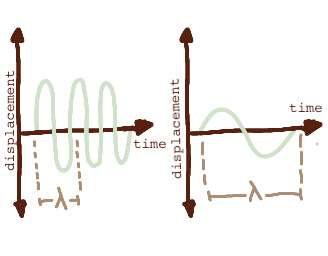
high-pitched sounds have shorter wavelengths than low pitched sounds
loudness - magnitude of the sound perceived by the ear
intensity - rate at which sound energy flows through a unit area measured watts per sqm (w/m²)
a sound must be 10x more intense to be 2x louder, 100 times to be 3x louder, etc
greater the amplitude, greater the loudness
lesser the amplitude, softer the loudness

doppler effect - change in the frequency of a wave in relation to an observer who is moving relative to the source of the wave

as the sound producer moves towards them, the soundwaves become closer to one another / as the sound producer moves away from them, the soundwaves become farther from one another
1 note
·
View note
Text
waves
a disturbance that moves from one place to another or through matter or space
carries energy away from the source
wave pulse: single disturbance
wave train: multiple disturbances

waves can be classified by direction of motion
transverse waves
perpendicular to the direction of the wave
highest point is called the crest
lowest point is called the trough
maximum displacement is the amplitude (a)

longitudinal waves
contains compressions and rarefactions
compression: region where particles are pressed together
rarefaction: stretch region between successive compressions

mechanical waves
medium of the wave
can be any form of matter
involves vibration of the medium
e.x sound, water, seismic, and spring/string waves
electromagnetic waves
don’t need medium but can have one
e.x gamma ray, x-ray, ultraviolet ray, infrared wave, microwave, light
one wavelength is a lambda (λ)
frequency (f): number of waves passing through a given point per unit of time
expressed in hertz (Hz)
1 Hz = 1 wave cycle/1 second
period (T): time taken to complete wave cycle & usually in seconds
wave speed (v): distance traveled by a wave per unit of time

frequency = wave speed divided by wavelength

period = wavelength divided by velocity

wave speed = wavelength divided by period

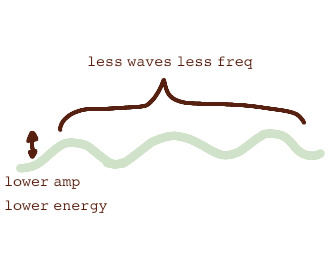
0 notes
Text
biology !
✧ THE MICROSCOPE !
microscope - tool used by scientists to view objects to small to be seen with the naked eye
allows view of a magnified version of microscopic organisms or cells
most cells studied under microscopes are measured in micrometers (μm) equal to 0.001 millimeter
details of cells can be studied
mid-1660s - dutch scientist antonie van leeuwenhoek invented first practical microscope
used this to examine protozoans, bacteria, and other microscopic organisms
compound light microscope
most common microscope used in laboratories
two lenses - objective and ocular
monocular microscope - one ocular lense
binocular microscope - two ocular lense
has several objective lenses with different magnification power
scanner - 4x
low power objective (LPO) - 10x
high power objective (HPO) - 40x
oil immersion objective (OIO) - 100x
can be used to examine both living and nonliving specimens

parts and functions include:
mechanical
draw tube - holds ocular lens
body tube - connects ocular lens to the revolving nosepiece
coarse adjustment knob - moves either the body tube or stage upward or downward in greater increments to bring specimen into initial focus and should only be used with the scanner or lpo
fine adjustment knob - moves either the body tube or stage upward or downward in lesser increments to bring the specimen into sharp focus and used with hpo or oio
arm - supports body tube and is used to carry microscope
revolving nosepiece - circular and revolving part holding objectives
stage - flat platform to hold specimen slide
stage clips - secures specimen slide
inclination joint - attaches arm to pillar
pillar - provides support above base
base - provides firm and steady support
magnifying
ocular lens/eyepiece - detachable cylinder, capable of magnifying objects to 10x
objective lens - used to magnify the specimen under study, has LPO, HPO, and OIO
illuminating
condenser - concentrates light onto specimen
iris diaphragm - regulates how much light passes through the specimen
mirror - reflects light and directs it to the object
light source - sometimes replaces mirror, usually a small electric lamp
✧ CELLS !
1839 - matthias schieden, theodor schwann formulated cell theory
all living things are made of cells
new cells come from pre-existing cells
energy flows within cells
cells contain dna passed on from parent cell/s
all cells have basically the same chemical composition and metabolic activities
cell activity depends on the activities of subcellular structures within the cell
two main cell types :
prokaryotic cells
lack nucleus and membrane-bound organelles
eukaryotic cells
have both a nucleus and membrane-bound organelles
includes both animal and plant cells
three main parts of a cell include:
cell membrane
nucleus
cytoplasm
cell membrane
outermost boundary
separates cells
regulates movement of materials in/out of cell (semipermeable)
nucleus
membrane-bound structure at the center of the cell
contains dna (deoxyribonucleic acid)
nuclear membrane: gateway to nucleus and separates nucleus from cytoplasm
chromosomes: carriers of the genes, made up of dna
nucleolus: center for ribosomal activity, usually contains protein and ribonucleic acid (rna)
cytoplasm
largest part of the cell in terms of volume
composed of membrane-bound organelles
supports and suspends organelles and cellular molecules
protein synthesis
organelles
endoplasmic reticulum: channel for transport
quality control unit of cell
rough er: presence of ribosomes
smooth er: no ribosomes, site of lipid and steroid synthesis
number of ribosomes depend on activities of the cell
golgi body: packaging of secretory materials
proteins from ribosomes are chemically modified, packed, and sealed off in vesicles
lysosome: breakdown & degradation of substances by digestive enzyme + aptosis (cell suicide)
peroxisome: detoxification of harmful compounds + helps with oxygen
mitochondria: energy generators
produces adenosine triphosphate
number of mitochondrion varies depending on function/cell type
vacuole: for storage and support, filled with fluids and soluble molecules, bigger in plant cells
organelles found in specific cells
plastid: found in only plant cells, double-membrane-bound organelles
called chloroplast if containing chlorophyll
centriole: formation of spindle fibers, only in animal cells
cell wall: for protection and coverage and defines shape of plant cells
cell junction: for cell connections in only animal cells
other cytoplasmic inclusions
ribosome: protein factory, site of protein synthesis in all cells
recieve genetic info from rna and translates into amino acids
cytoskeleton: cellular strength and matility
plant cell

animal cell

✧ LEVELS OF ECOLOGICAL ORGANIZATION !
most cells look the same in early stages
new cells become specialized to carry out specific functions
tissues - cells grouped together to perform certain functions
animal tissues:

epithelial
cover the outermost part of the body
found lining the walls of digestive and respiratory tubes
protect underlying tissues
absorb nutrients
secretion of wastes
classified in number of layers:
simple
composed of one layer of cells
stratified
composed of two or more layers
muscular
ability to contract and relax
enables body movement
give shape to the body
classified according to structure:
striated
found in skeletal ad cardiac muscles
unstriated
smooth muscles found in some internal organs
classified according to movement:
voluntary
if its movement can be controlled
involve skeletal muscles
involuntary
when movement is beyond conscious control
controlled by involuntary muscles (e.x smooth muscles of the heart, esophagus, and urinary bladder)
connective
connect, bind, and pack body parts together
classified as loose and dense:
loose connective tissues
most common type
usually elastic
e.x areolar, adipose, and reticular tissues
dense connective tissues
have fibers as main matrix
composed of inelastic collagenous fibers
compactly arranged
designed for strength and support
e.x tendons, ligaments, cartilages
specialized connective tissues (e.x blood and bone) are not classified
nervous
responsible for the reception of stimuli and conduction of impulses in the body
neuron - nerve cell, basic functional unit of the nervous system
three types:
sensory neuron
reveive impulses from the different sense organs of the body
carry these impulses toward the central nervous system
motor neuron
carry impulses away from the central nervous system to muscle tissues and glands
located in the peripheral nervous system
interneuron
also called associative neurons
link the sensory neurons to motor neurons
plant tissues:
meristematic or embyronic tissues
made up of young, actively dividing cells
small, six-sided, and boxlike
transform into many different shapes and sizes according to function during maturity
usually found at the tips of roots and stems/shoots
types of meristematic tissues:
apical meristems
located at the plant shoot and root tips
produce three tissues:
protoderm
gives rise to the epidermis, the outer protective covering of a plant
ground meristem
produces ground tissues that form the bulk of the interior of a plant
procambium
produces vascular tissues that are responsible for the transport of water and nutrients
lateral meristems
located on the sides of a plant’s stem and in most plant’s roots
cause secondary growth, characterized by an increase in diameter
have two types:
vascular cambium
produces secondary tissues that induce secondary growth
extends throughout plant axis
cork cambium
produces the cork cells of the bark
located in the outer layer of the stems of woody plants and originates under the epidermis
intercalary meristems
located at the internodes or bases of leaves
help increase the length of internodes by pushing newly produced cells upward
nonmeristematic or permanent tissues
composed of mature (nondividing) and differentiated cells
two types:
simple nonmeristematic tissues
composed of only one kind of cell
perform several functions (e.x support, protection and secretion)
complex nonmesterimatic tissues
two types of complex tissues
xylem
aid in upward distribution of water and minerals
phloem
transport the food produced during photosynthesis to other parts of the plant
organs - a group of tissues working together to perform a particular function
made up of cells and tissues which carry out processes that keep animals alive


organ system - several organs working together to perform particular tasks


organ systems of plants are classified as the shoot and root systems
shoot system - usually above ground, and comprised of several organs that work together to perform specific functions (e.x buds, leaves, stems, flowers, and fruits)
root system - comprised of the roots and other associated parts, and is usually found underground, function is to anchor the plant in soil and absorb water and nutrients
organism - life-form composed of related parts that maintain different essential processes
population - group of organisms that belong to the same species living in the same geographical area
community - different populations of different species interacting with one another and their environment
ecosystem - smallest functional unit of ecology, consisting of all living organisms in a given area and nonliving factors in the environment
biome - major ecosystem type characterized by its distinct flora and fauna, which are adapted to their particular environment
biosphere - considered the highest level of ecological hierarchy, as it includes the xones of land, air and water where organisms live
✧ DOMAINS OF LIFE !
swedish taxonomist carolus linnaeus proposed only two kingdoms: plant and animal
the new six kingdoms include:
archaebacteria
eubacteria
fungi
protista
plantae
animalia
1990 - american microbiologist car woese introduce three domains of life:
archaea
consists of extremophiles or prokaryotic microorganisms that live in harsh conditions, such as extreme temperature, pH, and salinity
diverse microorganisms that can adapt to harsh environments
proteins on the gene sequences found in archaebacteria are mostly stable at extreme temperatures
classified based on their habitat and metabolism
archaebacteria - similar to eubacteria, is prokaryotic, but is more similar to eukaryotic cells, and lacks peptidogylcan made of carbohydrates, and cell membranes contain different kinds of lipid
methanogens
strictly anaerobic organisms (don’t need oxygen) whose metabolic activities produce methane
found in lake and swamp sediments, where decompose dead vegetation
found in the rumens of some herbivores where they help digest cellulose
found deep in the oceans where they thrive in undersea volcanic vents, where they synthesize organic molecules from carbon dioxide and hydrogen gas
abundant in dumpsites and raw sewage
e.x methanosarcina
methanotrix
halophiles
live in environments where salt concentration is high
found in tidal pools that have dried up over time
e.x halobacterium, halococcus, and salinivibrio
thermophiles
lack cell walls and a nucleus
usually live in hot and highly acidic conditions (e.x coal refuse piles)
also found in sulfur-rpoducing envronments such as sulfur vents or hydrothermal vents
survival in anaerobic environments depends on sulfur respiration
e.x thermoplasma acidophilum and thermoplasma volcanium
hyperthermophiles
thrive in the deep parts of the ocean
temperature and pressure are high
reduce sulfate to hydrogen sulfide in oil-rich environments
also live in locations rich in sulfide deposits, hot springs, and thermal vents
these places are acidic due to the production of sulfuric acid by hyperthermophiles
bacteria
consists of proteobacteria, cyanobacteria, spirochetes, and gram-positive bacteria
eubacteria - the true bacteria
organisms under this domain are almost everywhere
one of the oldest and most abundant organisms on earth due to their ability to survive in various environments or conditions
has existed for more or less 3.5 billion years
classified based on shape:

can live as a single cell or in colonies
colony - group of identical bacterial cells closely associated with one another
may join together in clusters or chains
prokaryotic
cell wall
rigid, outermost protective covering of a bacterial cell and is composed of peptidoglycan
peptidoglycan - molecule made of polysaccharides (carbohydrates) and amino acids (proteins)
maintains the shape and structure of the cell
site where viruses and antibiotics attach
cell membrane
thin, flexible, and semipermeable material that regulates the flow of materials into and out of the cells
has inward-folding membranes called mesosomes where cellular respiration takes place
nucleoid
where the genetic material is located
usually at the of the cell
not bound by a nuclear membrane
easily distinguished from the other parts of the bacterial cell
cytoplasm
occupies largest part of the cell
semiliquid portion that houses all the cytoplasmic inclusions such as the plasmid
site of essential processes needed for the cell growth, metabolism, and replication
ribosome
same function as those found in other cells
usually smaller
protein factories that translate the genetic codes from messenger rna (mrna) into proteins
pilus or fimbria
hollow hairlike structures made of proteins located on the surface of most species of bacteria
fimbriae allow bacteria to attach themselves to their host
pili are used for bacterial conjugation
flagellum
long appendage that propels the cell by spinning in a corkscrew motion
located at the terminal end of the cell membrane
capsule
serves as the outermost protective covering of some species of bacteria
composed of a slimy gelatinous substance
shields pathogenic bacteria from harsh environments and phagocytosis (also known as cell eating)
endospores
formed by some bacteria
highly resistant to harsh conditions
bacteria are nourished via the same food we eat
they spoil the food, and a change in smell and taste usually indicates their presence
some can make their own food through:
photosynthesis - a special type of chlorophyll is used to produce food (cyanobacteria)
chemosynthesis - converting inorganic compounds from their surroundings into organic materials
some bacteria are decomposers, who break down wastes and dead organisms into usable forms of energy
eukarya
includes most of the living organisms on earth, such as animals, plants, protists, and fungi
protists
eukaryotic organisms that can be unicellular or multicellular
grouped into:
plantlike or algae
diverse and widely distributed
range from single-celled to colonial and multicellular forms
not considered plants due to lack of protective structures for their reproductive cells
not classified as animals because they do not use cilia or flagella for movement
not considered fungus for lack of chitin in cell wall
some phytoplankton are protists
unicellular photosynthetic organisms that float on the surface of fresh water and salt
responsible for 50 to 85% of the oxygen in atmosphere
golden algae - diatoms
brown algae - kelp
red algae - gracilaria verrucosa
dinoflagellates - have two flagella in each cell and are found in marine environments
can grow bloom rapidly, turning water along coasts reddish-brown (red tide)
produces large amount of neurotoxins that harm marine organisms
animallike or protozoans
heterotrophic (depend on other organisms for food)
include zooflagellates
amoeba - one of the simplest known protozoans
consists of a nucleus and all other cellular parts present in a eukaryotic cell
crawls using pseudopodia (false feet)
powered by a protein called actin
eats tiny food particles
amoebiasis/amoebic dysentery - usually acquired in crowded and unsanitary areas
funguslike or slime molds
saprophytic (derive food and energy by breaking down dead organic matter)

fungi
includes wide variety of species
four major groups of fungi:
zygomycetes
rapid growers in soil/dead plants
asomycetes
parasitic and takes over their brains
basidiomycetes
spores develop in basidia
chytridiomycetes
live in soil, fresh water, and saline estuaries
found in dark, moist and humid environments
have eukaryotic cells with chitin cell walls
lack chlorophyll and procures food from other sources
some fungi obtain nutrients through parasitism
a few fungi are unicellular, most are multicellular
hyphae - threadlike filaments present in some species of fungi
elongated, tubular, and have branching filaments from the mycelium
the hyphae of the mycelium secrete enzymes that digest the food
horizontal hyphae grow across the surface of moldy food, making it appear moldy
rhizoids grows into the food
molds can reproduce asexually by growing vertical hyphae, where sporangium disperse individual spores that can develop into a new mycelium
other parts include:
cap - top part of the mushroom that protects the gills and spores
gills - found on the underside of the cap where the special structures called basidia are found
basidia - found on the gills, microscoping club-shaped reproductive structures that bear spores
stalk/stipe - supports the cap
annulus - ringlike structure along the stipe
mycelium - a mass of branching hyphae below the soil or growth medium that absorbs nutrients


✧ REPRODUCTION !
NTO DONE WIP DOSRYR GUS IM NOT DONE WITH MY NTOES
10 notes
·
View notes
Text
12 Red Herrings to Keep Your Readers Distracted
I’ve seen mystery/thriller authors use the same handful of red herrings too many times to count. So here are some (hopefully not as common) red herrings for your writing.
1. The Unreliable Narrator's Bias
Your narrator can play favourites and scheme and twist the way your readers interpret the story. Use this to your advantage! A character portrayed as untrustworthy can really be someone innocent the narrator framed, vice versa.
2. The Loyal Traitor
A character with a history of betrayal or questionable loyalty is an obvious suspect. They did it once, they could do it again, right? Wrong! They’ve actually changed and the real traitor is someone you trusted.
3. The Conflicted Expert
An expert—like a detective, scientist, or historian—analyses a piece of evidence. They’re ultimately wrong, either due to bias, missing data, or pressure to provide quick answers.
4. The Overly Competent Ally
You know that one sidekick or ally who’s somehow always ahead of the curve? They’re just really knowledgeable, your characters know this, but it makes it hard to trust them. Perfection is suspicious! But in this case, they’re actually just perfect.
5. The Misleading Emotional Clue
Maybe one of your characters is seen crying, angry, or suspiciously happy after xyz event. Characters suspect them, but turns out they’re just having a personal issue. (People have lives outside of yours MC smh). Or it could be a cover-up.
6. A Misleading Alibi
At first this character’s alibi seems perfect but once the protag digs into it, it has a major hole/lie. Maybe they were in a different location or the person they claimed to be with was out of town.
7. The Odd Pattern
Have a seemingly significant pattern—symbols left at crime scenes, items stolen in a specific order, crimes on specific dates. Then make it deliberately planted to mislead.
8. The Misinterpreted Relationship
A character was secretly close to a victim/suspect, making them a suspect. Turns out they were hiding a completely unrelated secret; an affair, hidden family connection, etc.
9. A Forgotten Grudge
Create a grudge or past feud and use it to cast suspicion on an innocent character. Introducing an aspect of their past also helps flesh out their character and dynamics as a group + plant distrust.
10. The Faked Death
Luke Castellan, need I say more (I will)? A supposedly innocent character dies, but turns out they faked it and were never a victim in the first place. They just needed to be out of the picture.
11. The Mistaken Eavesdropper
A character overhears a threat, argument, etc. They suspect B based on this convo, but turns out they just came to a false conclusion. (Or did they?)
12. The Forgetful Alibi
Someone confesses to hearing/seeing a clue, but turns out they were mistaken. Maybe they thought they heard a certain ringtone, or saw xyz which C always wears, but their memory was faulty or influenced by stress.
Looking For More Writing Tips And Tricks?
Check out the rest of Quillology with Haya; a blog dedicated to writing and publishing tips for authors!
Instagram Tiktok
8K notes
·
View notes
Text
subtle acts of love
giving them food without them asking for it
randomly bringing them flowers
holding a door open for them
pulling out their chair for them
guiding them with a gentle hand on the small of their back
making them lunch to take to work with them
fixing their clothes or hair
giving them a massage
talking casually about a shared future
showing them their appreciation for them
waiting at home to say hello when they come in
paying complete attention to them
giving them a casual, but thoughtful compliment
writing them a love letter and hiding it for them to find
showing them something that reminded them of their partner
humming a song to calm them down
giving them a quick kiss whenever they pass each other at home
casual grabbing their hand and swinging it back and forth
remembering something they told them
11K notes
·
View notes
Text
When your Character...
Gets into: A Fight ⚜ ...Another Fight ⚜ ...Yet Another Fight
Hates Someone ⚜ Kisses Someone ⚜ Falls in Love
Calls Someone they Love ⚜ Dies / Cheats Death ⚜ Drowns
is...
A Child ⚜ Interacting with a Baby/Child ⚜ A Genius ⚜ A Lawyer
Beautiful ⚜ Dangerous ⚜ Drunk ⚜ Injured ⚜ Shy
needs...
A Magical Item ⚜ An Aphrodisiac ⚜ A Fictional Poison
To be Killed Off ⚜ To Become Likable ⚜ To Clean a Wound
To Find the Right Word, but Can't ⚜ To Say No ⚜ A Drink
loves...
Astronomy ⚜ Baking ⚜ Cooking ⚜ Cocktails ⚜ Food ⚜ Oils
Dancing ⚜ Fashion ⚜ Gems ⚜ Mythology ⚜ Numbers
Roses ⚜ Sweets ⚜ To Fight ⚜ Wine ⚜ Wine-Tasting ⚜ Yoga
has/experiences...
Allergies ⚜ Amnesia ⚜ Bereavement ⚜ Bites & Stings ⚜ Bruises
Caffeine ⚜ CO Poisoning ⚜ Color Blindness ⚜ Food Poisoning
Injuries ⚜ Jet Lag ⚜ Mutism ⚜ Pain ⚜ Poisoning
More Pain & Violence ⚜ Viruses ⚜ Wounds
[these are just quick references. more research may be needed to write your story...]
25K notes
·
View notes
Text
List of Interesting Latin Phrases
A list I made just to satisfy my vain cravings for resonating mottos for a secret society I'm working on. Enjoy!
abi in malam crucem: to the devil with you!
ad astra per ardua: to the star by steep paths
ad augusta per angusta: to honors through difficulties
aegis fortissima virtus: virue is the strongest shield
amor vincit amnia: love conquers all things
animo et fide: by courage and faith
arbitrium est judicium: an award is a judgement
aut mors aut victoria: either death or victory
aut vincere aut mori: either victory or death
bello ac pace paratus: prepared in war and peace
bibamus, moriendum est: let us drink, death is certain (Seneca and Elder)
bonis omnia bona: all things are good to the good
cede nullis: yield to no one
cito maturum, cito putridum: soon ripe, soon rotten
consensus facit legem: consent makes law
data fata secutus: following what is decreed by fate (Virgil)
durum telum necessitas: necessity is a hrad weapson
dux vitae ratio: reason is the guide of life
e fungis nati homines: men born of mushrooms
ego sum, ergo omnia sunt: I am, therefore all things are
pulvis et umbra sumus: we are but dust and shadow
quae amissa salva: things lost are safe
timor mortis morte pejor: the fear of death is worse than death
triumpho morte tam vita: I triumph in death as in life
tu vincula frange: break your chains
vel prece vel pretio: for either love or for money
verbera, sed audi: whip me, but hear me
veritas temporis filia: truth is the daughter of time
vero nihil verius: nothing is truer than the truth
vestigia nulla restrorsum: foosteps do not go backward
victus vincimus: conquered, we conquer (Plautus)
sica inimicis: a gger to his enemies
sic vita humana: thus is human life
─── ・ 。゚☆: *.☽ .* . ───
💎If you like my blog, buy me a coffee☕ and find me on instagram! Also, join my Tumblr writing community for some more fun.
💎Before you ask, check out my masterpost part 1 and part 2
Reference: <Latin for the Illiterati: a modern guide to an ancient language> by Jon R. Stone, second edition, 2009
9K notes
·
View notes
Text
100 Dialogue Tags You Can Use Instead of “Said”
For the writers struggling to rid themselves of the classic ‘said’. Some are repeated in different categories since they fit multiple ones (but those are counted once so it adds up to 100 new words).
1. Neutral Tags
Straightforward and unobtrusive dialogue tags:
Added, Replied, Stated, Remarked, Responded, Observed, Acknowledged, Commented, Noted, Voiced, Expressed, Shared, Answered, Mentioned, Declared.
2. Questioning Tags
Curious, interrogative dialogue tags:
Asked, Queried, Wondered, Probed, Inquired, Requested, Pondered, Demanded, Challenged, Interjected, Investigated, Countered, Snapped, Pleaded, Insisted.
3. Emotive Tags
Emotional dialogue tags:
Exclaimed, Shouted, Sobbed, Whispered, Cried, Hissed, Gasped, Laughed, Screamed, Stammered, Wailed, Murmured, Snarled, Choked, Barked.
4. Descriptive Tags
Insightful, tonal dialogue tags:
Muttered, Mumbled, Yelled, Uttered, Roared, Bellowed, Drawled, Spoke, Shrieked, Boomed, Snapped, Groaned, Rasped, Purred, Croaked.
5. Action-Oriented Tags
Movement-based dialogue tags:
Announced, Admitted, Interrupted, Joked, Suggested, Offered, Explained, Repeated, Advised, Warned, Agreed, Confirmed, Ordered, Reassured, Stated.
6. Conflict Tags
Argumentative, defiant dialogue tags:
Argued, Snapped, Retorted, Rebuked, Disputed, Objected, Contested, Barked, Protested, Countered, Growled, Scoffed, Sneered, Challenged, Huffed.
7. Agreement Tags
Understanding, compliant dialogue tags:
Agreed, Assented, Nodded, Confirmed, Replied, Conceded, Acknowledged, Accepted, Affirmed, Yielded, Supported, Echoed, Consented, Promised, Concurred.
8. Disagreement Tags
Resistant, defiant dialogue tags:
Denied, Disagreed, Refused, Argued, Contradicted, Insisted, Protested, Objected, Rejected, Declined, Countered, Challenged, Snubbed, Dismissed, Rebuked.
9. Confused Tags
Hesitant, uncertain dialogue tags:
Stammered, Hesitated, Fumbled, Babbled, Mumbled, Faltered, Stumbled, Wondered, Pondered, Stuttered, Blurted, Doubted, Confessed, Vacillated.
10. Surprise Tags
Shock-inducing dialogue tags:
Gasped, Stunned, Exclaimed, Blurted, Wondered, Staggered, Marvelled, Breathed, Recoiled, Jumped, Yelped, Shrieked, Stammered.
Looking For More Writing Tips And Tricks?
Check out the rest of Quillology with Haya; a blog dedicated to writing and publishing tips for authors!
Instagram Tiktok
32K notes
·
View notes
Text
I forgot I have to be active here so here’s my Twitter tutorial on how to draw folds I made a while back to help a friend!
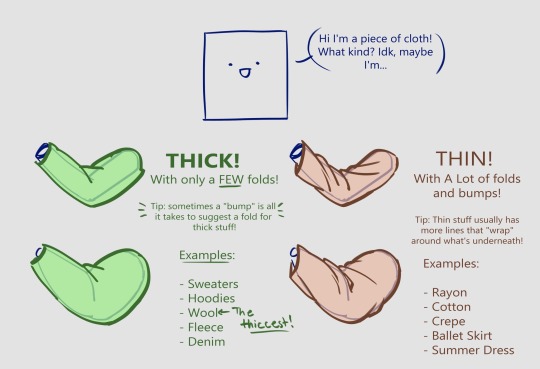
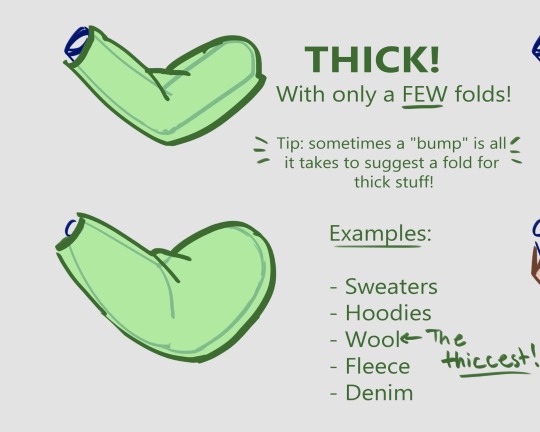
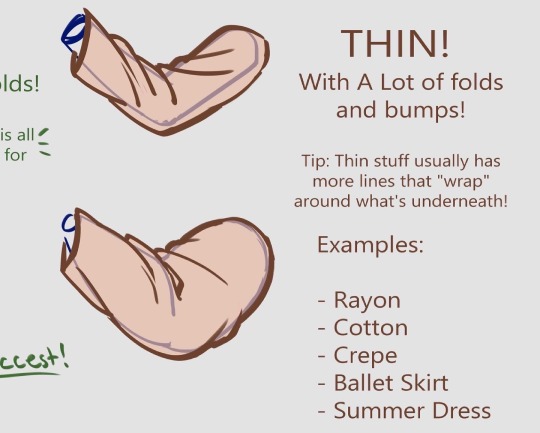
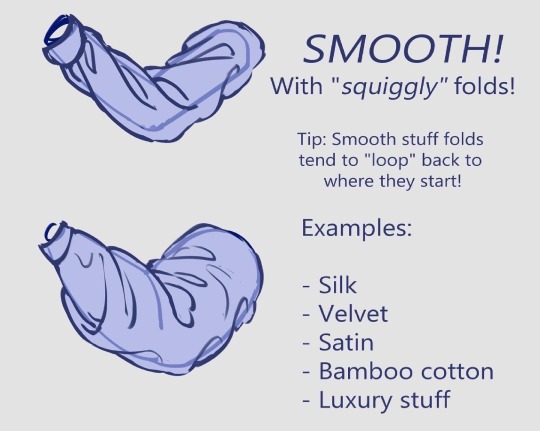
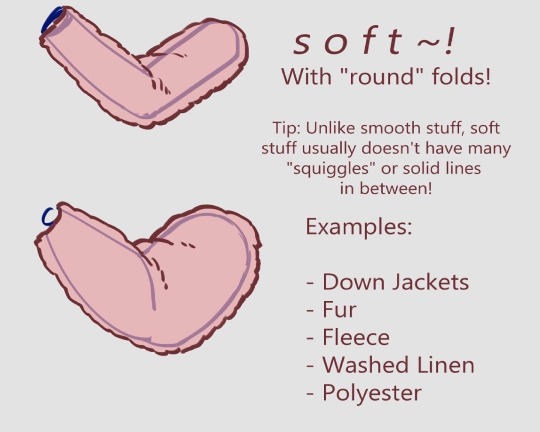
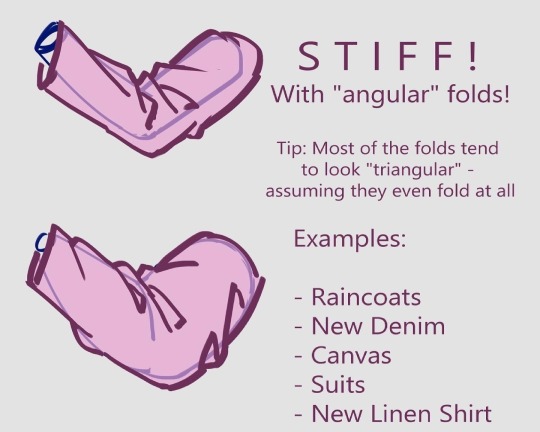
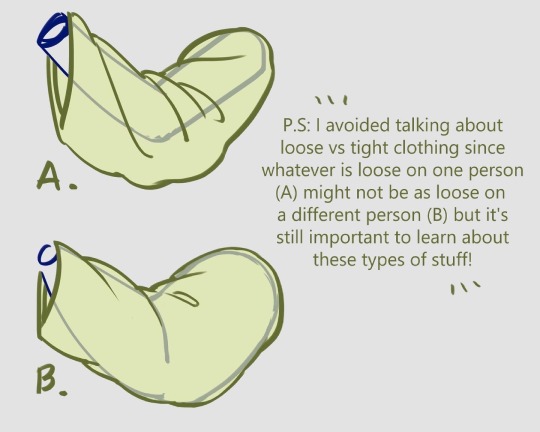

180K notes
·
View notes
Text
for all the artists out there, here are my favorite resources i use to learn!
Files
The Complete Famous Artist Course
Art Books and Resources
Art, Anatomy, and Color Books
PDF Files of Art Books
Internet Archive
YouTube
My YouTube Playlist of Tutorials
How to Draw Facial Features
Drawing and Art Advice
Drawing Lessons
Art Fundamentals
Anatomy of the Human Body
2D Animation
Perspective Drawing
Websites
Pinterest Board for Poses
Another Pinterest Board for Poses
Pinterest Boards for References
Reference Angle
Figurosity
Sketch Daily
Line of Action
Human Anatomy
Animal Photo References
Humanae - Angélica Dass
Fine Art - Jimmy Nelson
Character Design References
CDR's Twitter Account
iamagco's Twitter Account
taco1704's Twitter Account
takuya_kakikata's Twitter Account
EtheringtonBro's Twitter Account
Drawabox
Color Wheel
Color Palette Cinema
Free Images and Pictures
Free Stock Photos
FILMGRAB
Screen Musings
William Nguyen Light Reference Tool
SketchFab - 3D Skeleton Model
Animation References - sakugabooru
Animation References - Bodies in Motion
39K notes
·
View notes
Text
HOW TO WRITE ROMANTIC ATTRACTION FOR DUMMIES
For anyone who wants to learn, (especially aro/ACE, aspec, ect.)
Requested by the lovely @darkandstormydolls
Alrighty! Welcome back or welcome to my blog! I'm dipping my toes back into the category of posts that gained me my exposure!
So if you're here, you want to know how to write romantic attraction/romance!
Strap in and let's begin!

(Pls spread this to people you think would benefit from seeing it, or anyone who requested it bc I forgot, ANY ASPECS)
Step one -
Your characters must admire one another at the beginning, Romantic feelings usually do not present themselves as obvious until you really think them through, meaning your characters may not notice they have a crush until it's too late
These are general statistics and light stereotypes. So feel free to not use this tip:
Male characters usually tend to notice physical things first, like body shape, hair, skin, clothing, the way their lover moves, ect
And Female Characters Generally tend to notice more small things and personality-based traits first, like their lover's humor, speaking mannerisms, shifts in expression, ways they fidget, emotion in their voice, ect.
And someone who is in love will generally show more interest in this particular person's movements, actions, words, and anything in general.
Step 2 -
The character will show more interest in sharing their love language with their lover/crush
Physical touch - People with physical touch love languages may want to hold hands, cuddle, hug, or just lean on their crush whenever they are close to them moreso than they want to with others
Gift giving - Gift givers will want to get more gifts more often for their crush, probably thinking of them whenever they see little trinkets or wanting to get them big gifts for special occasions or signs of appreciation
Acts of Service - Acts of service people will offer to do extra favors and a bunch of extra stuff they don't have to do twice as much as normal
Words of Affirmation - Flattery, they will generally flood their crush with kind words and compliments
Quality time - Quality time people will want to spend time with their crush at almost every turn, and when they want company, will turn to their crush first
Step 3 -
After a while, these urges while become very prominent and more noticeable to the person having them
They may find themselves fantasizing about their crush or having them show up in their thoughts more and more, feeling nicer and happier when they're around, or when they're thinking about them
Smiling when they think about them, cutsey little fluff thingies like that
A crush is essentially: I want to date that, I want to be near that always, I want to marry that, I want that to snuggle me (or other love languages)
Or in simpler terms: if that asked me out, I would say yes (or at least want to say yes if your character is in denial)
Step 4 -
The character's urges to be close to this person grows strong enough that they do smth about it, whether prompted by another character. Or they just don't know I how to not anymore (like when you wanna eat candy and you don't want to, but you do anyway bc I JUST NEED THE CHOCOLATE OKAY?)
(Or for Aro/Ace, garlic bread)
People who are in love are generally very prone to be all dreamy and poetic and VERY EXTREMELY BIASED towards their crush
Then Yada Yada they kiss & shit
You're welcome, BYEEEEEEEE 👋
Happy writing!
Love you! Thanks for reading, And Ghost Tumblr Mother says go drink some water and have a snack, you've earned it, and you are beautiful <333
Have a good day! :]
@blue-kyber @thisisntrocket @cosmolumine @i-do-anything-but-write @paeliae-occasionally
@supercimi @the-letterbox-archives @sunglasses-in-the-bentley @vyuntspakhkite-l-darling @artsandstoriesandstuff
@corinneglass @wyked-ao3 @urnumber1star
4K notes
·
View notes
Text
Writing Tips Master Post
Character writing/development:
Character Arcs
Making Character Profiles
Character Development
Comic Relief Arc
Internal Conflict
Character Voices
Creating Distinct Characters
Suicidal Urges/Martyr Complex
Creating Likeable Characters
Writing Strong Female Characters
Writing POC Characters
Building Tension
Plot devices/development:
Intrigue in Storytelling
Enemies to Lovers
Alternatives to Killing Characters
Worldbuilding
Misdirection
Consider Before Killing Characters
Foreshadowing
Narrative:
Emphasising the Stakes
Avoid Info-Dumping
Writing Without Dialogue
1st vs. 2nd vs. 3rd Perspective
Fight Scenes (+ More)
Transitions
Pacing
Writing Prologues
Dialogue Tips
Writing War
Writing Cheating
Worldbuilding:
Worldbuilding: Questions to Consider
Creating Laws/Rules in Fantasy Worlds
Book writing:
Connected vs. Stand-Alone Series
A & B Stories
Writer resources:
Writing YouTube Channels, Podcasts, & Blogs
Online Writing Resources
Outlining/Writing/Editing Software
Writer help:
Losing Passion/Burnout
Overcoming Writer's Block
Fantasy terms:
How To Name Fantasy Races (Step-by-Step)
Naming Elemental Races
Naming Fire-Related Races
How To Name Fantasy Places
Ask games:
Character Ask Game #1
Character Ask Game #2
Character Ask Game #3
Miscellaneous:
1000 Follower Post
2000 Follower Poll
Writing Fantasy
29K notes
·
View notes
Text
man as free
free will
we have choice in how we act
power to choose between right and wrong based on what you believe
determinism (realism)
all behaviour is caused by past events and is now predictable
everything in life is following a strict script
environmental determinism (albert bandura)
one’s character and traits are shaped by environment
biological determinism (albert bandura)
one’s character and traits are shaped by biological makeup
types of freedom:
negative freedom
free due to absence of hindrances/obstacles
positive freedom
free because we have the ability to do what we want
possible further reading: search up arthur schopenhauer for more stuff like this, that guy's my favorite philosopher :)
0 notes
Text
knowing thyself (socrates)
socrates
greek philosopher in athens
one of the three greatest figures of the ancient western philosophy
“the godfly of athens” because he continuously questioned people to the point of annoyance
made the socratic method of continuous questioning to get an answer
“midwife of knowledge”
forced to commit suicide via hemlock at his execution
“the unexamined life is not worth living”
you have to dissect and learn yourself to know your destination
how to know thyself:
know your skills, passions, and interests
know your strengths and weaknesses
know your greatest fears in life
know people’s perception of you
question your beliefs
what constitutes a good life?
peace of mind
understanding morality
5 notes
·
View notes